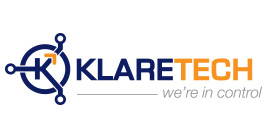Industry 4.0 is changing production – and how it is automated

Revolution or evolution, call it what you will – we're well on our way to the world of Industry 4.0. Leading the way is the automotive industry, but the rest are quickly picking up momentum, explains B&R's marketing manager, Stefan Schönegger, during an interview with the website GIT SICHERHEIT.
GIT SICHERHEIT: Mr. Schönegger, the entire concept of Industry 4.0 is closely tied to a trend where customers and their individual needs exercise a greater amount of influence over the production process. How exactly is that going to work?
Stefan Schönegger: We can take a look at the automotive industry for an answer to that. Mass production began with Ford's Model T. A key factor there was the decision to restrict production to just one model. Even the range of colors was restricted, leading to the famous quote attributed to Henry Ford: "You can have any color as long as it's black." These days, however, the world is a more colorful place. All you need to do is take a look at the websites of car manufacturers to get an idea of the wide-reaching changes taking place. Complex configurations with virtually endless variants and options allow customers to create, quite literally, a one-of-a-kind product.
Customers can define virtually every aspect of their car, and the production process is modified accordingly. Through this process the customer gains direct access to the ERP system and, in turn, the production process. Of course, there are still limits. Customers must make due with a selection of "only" four or five chassis types. Similarly, the potential for variation in paint type and color is also limited. Nevertheless, the signs all point to batch size one, and suppliers of machinery and automation need to align themselves with this trend.
Aside from the automotive industry, what other sectors and product types are affected by this trend? Is this type of advanced customization only an issue for certain industries?
Stefan Schönegger: All industries are affected. Think about smartphones with custom covers, photo books from your family vacation or foods with individualized packaging. Even the pharmaceutical industry is already producing blister packs containing custom-sorted medication. Patients in hospitals now receive the precise selection of medication they have been prescribed, and it is prepared by a fully automated system. This completely eliminates the potential for human error during preparation. Krones and Dividella are just two examples of customers with whom we have worked in this area. It's also the approach we take at our own factory. For example, we offer our customers the option having our modular I/O system pre-assembled and delivered as an out-of-the-box solution, complete with custom channel labeling.
What does it take to get there?
Stefan Schönegger: To make these possibilities a fully automated reality, you need direct access to individual sensors right from the ERP system. The strictly defined layers of the traditional automation pyramid will continue to fade, leaving a single, fully integrated solution. A modern control system can, for example, take over the tasks of a SCADA or even MES system while simultaneously monitoring the current status of a sensor signal. To deal with the diversity of variants, modular design is absolutely crucial. You need to be able to add and remove components or group them into mechatronic units as needed – without ever impeding the production process. Of course, in order to do this, the system needs to be able to automatically adjust the configuration of all the components involved.
In addition to vertical integration in terms of consistency and transparency as you have just mentioned, you also talk about horizontal integration of the disciplines. What do you mean by that?
Stefan Schönegger: By horizontal integration I mean the merging of all disciplines involved in the development and production of a product. Simulation, electrical engineering, mechanical engineering, automation and quality assurance inspections must work together seamlessly. For example, any changes to the electrical layout in the ECAD system need to be accounted for in the automation system as well. Of course this also applies in the opposite direction to changes made in the automation system.
Can you give us some specific examples of this?
Stefan Schönegger: B&R and EPLAN have developed a perfect interface that is ideally suited to linking the worlds of ECAD and automation. This type of workflow is precisely what is meant by the term "round-trip engineering". The same applies to the integration of machine vision systems and the control system. Vision systems are frequently used for final product inspection to provide quality assurance. Manufacturers want to know which products, with which serial numbers and from which batches are delivered to which customers. This is known as "track and trace" and requires close links between the machine control and the production control systems further up in the architecture. Together with Cognex, the well-known manufacturer of vision components, we have integrated real-time synchronization into the camera system using POWERLINK. This allow us to use the camera to control time-critical processes such as sorting out faulty products.
You've also mentioned terms such as differentiation and efficiency. Where do they come in?
Stefan Schönegger: All of these requirements serve the same goal, namely to ensure the viability and profitability of the manufacturer. Differentiating oneself on the global market is a serious challenge. Machine manufacturers are affected by this too. All the focus on batch-size-one and the need for more individualized solutions doesn't change the fact that you still need to produce goods efficiently. Retooling times must be dramatically reduced, and plant downtime simply cannot be tolerated. With Scalability+ we provide the ideal basis for machine manufacturers to tackle these challenges.
What exactly does Scalability+ mean?
Stefan Schönegger: Scalability+ is an approach to automation that makes it possible to design completely new machine concepts. The basis for this is the complete freedom to combine components from across the entire hardware portfolio with all the available technology functions. For example, you can implement sophisticated robotics control on a cost-effective standard controller rather than relying on – and being restricted to – specialized controllers. Customers also have the added benefit of being able to differentiate themselves with their own modular application components. The reusability afforded by this modular software can significantly reduce development expenditures. Through the complete flexibility to select and scale hardware components as needed, customers are able to delay definition of the final, optimized hardware configuration until very late in the development process.
Another key aspect of Industry 4.0 is standardization. That's where POWERLINK comes in, right?
Stefan Schönegger: POWERLINK and openSAFETY form the ideal basis and meet all of the technical requirements needed to support the long-term goals of Industry 4.0. Both communication standards are open source and are freely available, because, after all, genuine openness is the true essence of the fourth industrial revolution. Both systems are well-complemented by OPC UA and IO-Link communication. These four technologies are ideal for use together and their individual strengths come together to create a nicely harmonized system.
Speaking of openness, industrial communication networks are increasingly required to work much more closely with third-party systems. Why is this gaining significance?
Stefan Schönegger: Industrial communication networks must provide interoperability with third-party systems. Virtually every production line is a conglomeration of machines and production units supplied by different manufacturers. For efficient and economical production down to batch size one, however, communication across all production units is a fundamental requirement. Each component involved in the production process must be capable of exchanging data with every other component. This cannot be limited to components from the same manufacturer. A solid foundation of compatibility with existing systems and a dedication to completely open technology are absolutely critical. An open standard is a safeguard for investments and provides freedom to both the user and the owner of the system.
Ultimately, the development of Industry 4.0 and concepts such as the Internet of Things and cloud computing all call for the decentralization of automation processes. What exactly does this mean?
Stefan Schönegger: Components these days are incorporating ever higher levels of intelligence, and this is adding to the overall volume of data to be managed. Direct communication between components is an absolute necessity for certain processes. A core technical characteristic of POWERLINK is that stations on the network can cross-communicate with each other. POWERLINK organizes communication among network stations, while at the same time allowing the system to be expanded freely without affecting real-time performance. Rigid topologies cause problems when you go to expand the system.
A further dimension of Industry 4.0 in this context is how to maintain a safe working environment in high voltage areas while at the same time achieving the necessary levels of flexibility and openness in production processes that we've been discussing. Nobody wants to enclose their machines in safety cages or behind protective gates. What are the implications for safety on the production floor?
Stefan Schönegger: You're right, enclosing machines in safety cages is not the way to go. It should be possible to dynamically configure machines and production areas according to the workpiece that is currently being produced by adding, removing or rearranging machine modules. "Fieldbus-integrated safety control systems are an essential component of a modular machine design. Since it is completely independent of the type of fieldbus used, the openSAFETY protocol allows individual modules and entire machines to be equipped with a uniform safety solution, even when they use different protocols to communicate among themselves. "With openSAFETY, a production line – including all of its dynamically configurable modular units – can be managed as a single safety unit." Operators benefit from unbridled performance without the restrictions of protective barriers – thanks to fully integrated safety functions for complex kinematic chains and features such as safely limited speed at the tool center point. There is no longer any excuse for using cost-intensive safety cages.


